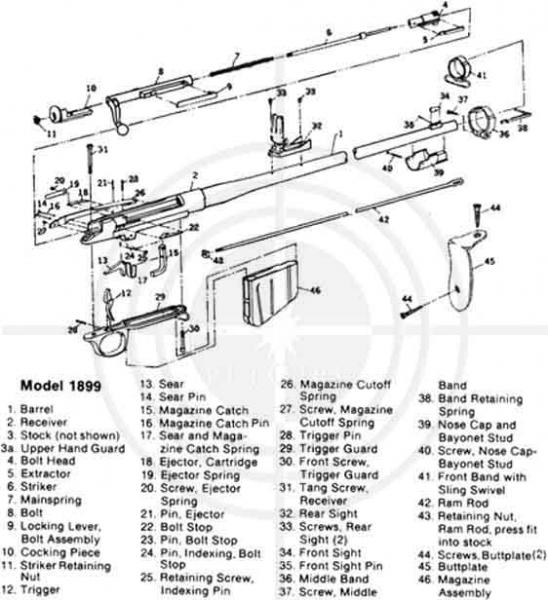Looks like the forwards lugs are part of the detachable bolt head. This is similar to the lugs of the Mosin Nagant, and would preclude the rear lugs being effective as load bearing lugs, thus they'd act as safety lugs only.
Firing stresses would have been distributed in the same manner as the Mauser bolt, directly to the receiver ring. The bolt body would not be subject to compression in normal firing, and the effect of action body spring would be eliminated.
Its likely the metalurgy was of about the same level as that of the
Krag
.
Looking into the Low Number Springfields I've found that these remained in service with the USMC long after they were pulled from US Army use. The Marines seem to have had no problems with them. They drilled a hole in the Receiver to allow escape of gases should a case rupture, and issued orders that Low Number rifles were not to be used to launch rifle grenades.
The Metal and heat treatment were inferior, but the strength of the design prevented most of the Low Number receivers from failure despite the poor materials used.
A stronger design can't completely make up for poor materials.
Nickel Steel and more sophisticated alloys used in later production made the Springfield extremely strong, though it still had some design flaws, such as the two piece firing pin.
adopted?
Information














 PM
PM






